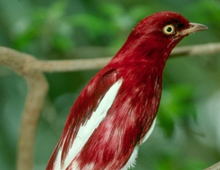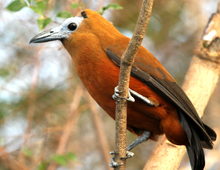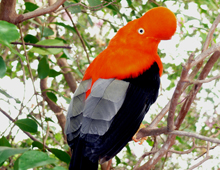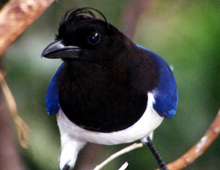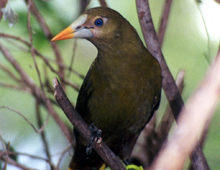
The National Bird of Venezuela, this South American oriole has been a prized cage bird for more than 150 years. The painter, Henri Mattise, included one in his collection of tropical birds that he kept to “tune his colors”. They are sometimes known as “Bugle Birds” for their piercing, melodious voices. Chicks have hatched at the DWA.

